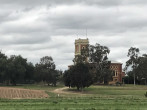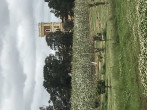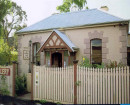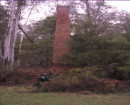DHURRINGILE
870 MURCHISON-TATURA ROAD DHURRINGILE,GREATER SHEPPARTON CITY
-
Add to tour
You must log in to do that.
-
Share
-
Shortlist place
You must log in to do that.
- Download report




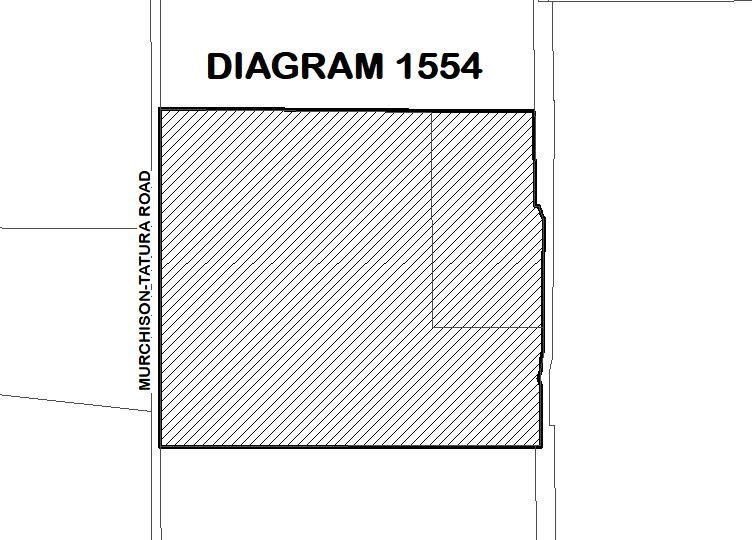
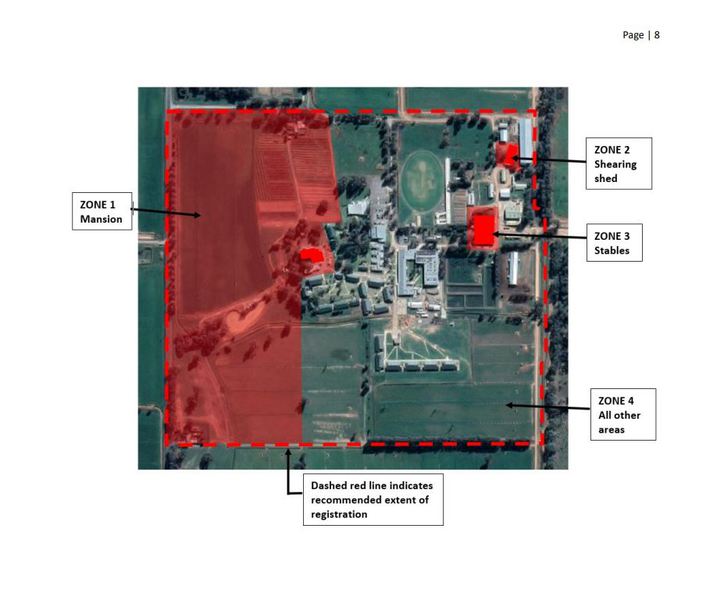



Statement of Significance
WHAT IS SIGNIFICANT?
Dhurringile including the mansion, shearing shed, stables and all fixtures attached to the buildings at the time of registration including all fixtures attached to the buildings such as light fittings, stained glass windows, mantlepieces and built-in furniture in the mansion, mantlepieces and built-in furniture in theformer residence in the stables, and associated equipment and machinery in the shearing shed and stables. It also includes any historical archaeology associated with the former uses of the place.
HOW IS IT SIGNIFICANT?
Dhurringile is of architectural, archaeological and historical significance to the State of Victoria. It satisfies the following criterion for inclusion in the Victorian Heritage Register:
Criterion A
Importance to the course, or pattern, of Victoria?s cultural history.
Criterion C
Potential to yield information that will contribute to an understanding of Victoria?s cultural history.
Criterion D
Importance in demonstrating the principal characteristics of a class of cultural places and objects.
WHY IS IT SIGNIFICANT?
Dhurringile and its outbuildings are of historical significance as an important example of a substantialpastoral propeorty built on the proceeds of gold discoveries and subsequent pastoral wealth. It is significant for its association with the Winter and Winter-Irving families who were among the largest pastoral landholders in Victoria, and as an example of the work of prominent architectural firm, Lloyd Tayler and Wyatt. [Criterion A]
Dhurringile is also of historical significance for its use as an internment and World War II prisoner of war camp which reflects an aspect of Australian life which is not well known. Its subsequent use by the Presbyterian Church as a rural training centre for migrant boys from the United Kingdom is of historical significance for its association with the perceived need at the time to populate Australia with migrants of Anglo-Celtic background. [Criterion A]
Dhurringile is of archaeological significance for its potential to yield information about the underground tunnels and tanks associated with the nineteenth century water treatment system at the place, and for its potential to yield physical evidence associated with its twentieth century uses as a World War II internment camp and prison, and as a boy's home. [Criterion C]
Dhurringile is of architectural significance as one of Victoria's grandest mansions and a notable example of the Victorian Italianate style. [Criterion D]
-
-
DHURRINGILE - History
Dhurringile was constructed in 1877 for pastoralist James Winter tothedesign of architects Lloyd Tayler and Frederick Wyatt. James Winterarrived in Victoria with his parents and three brothers in 1841. They initially settled near Ballarat and the discovery of gold on theirlandallowed for the family to invest in large pastoral holdingsthroughoutnorthern Victoria. Three of the four Winter sons constructedsubstantialhomes on their land in the Goulburn Valley, the grandest ofthem beingNoorilim (VHR H0297), built by William Winter in 1878-79.James Winter owned Toolamba and after the original timber homestead waswashed awayin the Goulburn flood of 1870, he selected a site on a riseaway fromthe river for the construction of a huge 68 room towered brickmansionhe named Dhurringile. The mansion was probably designed byFrederick Wyatt, as Lloyd Tayler, the more well-known of the two, was inEnglandfrom January 1875 to May 1877. As well as the mansion, theproperty alsohad a manager's residence, extensive stabling, a shearingshed and otheroutbuildings. Dhurringile was lit by gas and a gas workswas located atthe rear of the mansion. An 1880 newspaper articlereported that 'every portion of the house is supplied with gas,manufactured on the premises while, in order to facilitate verbalcommunications, speaking tubes arefitted throughout the building.' Theshearing shed (reputed to be one ofthe largest in Victoria) and brickstables survive and both are locatedto the east of the mansion. Althoughoften absent from his countryproperty, James Winter was active in localcommunity affairs and throughhis interest in agricultural innovation,significantly increased thestock carrying capacity of his property. Hebred prize-winning sheep,was a founding member of the NortheasternPastoral and Agricultural Society and served as councillor and laterPresident of the Shire ofWaranga in 1873. James Winter died in 1885 butDhurringile stayed in theownership of the Winter family until 1907.Dhurringile then passedthrough a number of hands before being purchasedin December 1925 by Vincent Vernon Hart. It appears that Dhurringile hadbeen vacant formany years and remained unoccupied while in Hart'sownership. In 1939,the Commonwealth government negotiated with Hart torent the propertyfor use as an internment camp for German and Italianaliens. Interneeswere held at Dhurringile until they were transferred toother camps butby March 1940, the Department of the Interior had vacatedthe property. In 1941, Dhurringile was taken up by the army for use as aPrisoner of War Camp for Germans captured in the Middle East. TheMurchison camp consisted of five compounds including the Dhurringilemansion which was intended for German officers who were to be given morefavourable treatment than other ranks. In July 1945, the Germanprisoners were transferred to other sites and at the end of the war, thesite was cleared of huts and all other military buildings. In 1947,Dhurringile was purchased by the Presbyterian Church for use as ahomefor immigrant boys from the United Kingdom whose fathers had diedduring the war. The intention was to train the boys in farming methodsto prepare them for employment. By this time the mansion was inadeteriorating condition and substantial repairs and alterationswereneeded. The Dhurringile Rural Training Farm did not open until 13June 1951. Life in the home was spartan, difficulties were encounteredinrecruiting boys from Scotland and the scheme had limited success. TheCommonwealth Government continued to provide increasing financialsupportto the home in accordance with an immigration policy to promoteBritishmigration, but difficulties persisted and the Dhurringile Rural TrainingFarm closed in 1964. In March 1965, Dhurringile was purchased byVictorian Government Penal Department for use in the rehabilitation ofalcoholic prisoners. The farm was re-fenced and the agricultural partofthe property rehabilitated to provide a level of self-support. Prisonersprovided labour for extensive repair and alteration works atthe mansion.Dhurringile currently operates as a correctional facility,and themansion has been adapted for use as an administrative and training centre.DHURRINGILE - Permit Exemptions
General Exemptions:General exemptions apply to all places and objects included in the Victorian Heritage Register (VHR). General exemptions have been designed to allow everyday activities, maintenance and changes to your property, which don’t harm its cultural heritage significance, to proceed without the need to obtain approvals under the Heritage Act 2017.Places of worship: In some circumstances, you can alter a place of worship to accommodate religious practices without a permit, but you must notify the Executive Director of Heritage Victoria before you start the works or activities at least 20 business days before the works or activities are to commence.Subdivision/consolidation: Permit exemptions exist for some subdivisions and consolidations. If the subdivision or consolidation is in accordance with a planning permit granted under Part 4 of the Planning and Environment Act 1987 and the application for the planning permit was referred to the Executive Director of Heritage Victoria as a determining referral authority, a permit is not required.Specific exemptions may also apply to your registered place or object. If applicable, these are listed below. Specific exemptions are tailored to the conservation and management needs of an individual registered place or object and set out works and activities that are exempt from the requirements of a permit. Specific exemptions prevail if they conflict with general exemptions. Find out more about heritage permit exemptions here.Specific Exemptions:It should be noted that Permit Exemptions can be granted at the time of registration (under s.38 of the Heritage Act). Permit Exemptions can also be applied for and granted after registration (under s.92 of the Heritage Act).
Under s.38 of the Heritage Act 2017 the Executive Director may include in his recommendation categories of works or activities which may be carried out in relation to the place or object without the need for a permit under Part 5 of the Act. The Executive Director must not make a recommendation for any categories of works or activities if he considers that the works or activities may harm the cultural heritage significance of the place or object. The following permit exemptions are not considered to cause harm to the cultural heritage significance of Dhurringile.
General Condition 1
All exempted alterations are to be planned and carried out in a manner which prevents damage to the fabric of the registered place or object.General Condition 2
Should it become apparent during further inspection or the carrying out of works that original or previously hidden or inaccessible details of the place or object are revealed which relate to the significance of the place or object, then the exemption covering such works shall cease and Heritage Victoria shall be notified as soon as possible.General Condition 3
All works should ideally be informed by Conservation Management Plans prepared for the place. The Executive Director is not bound by any Conservation Management Plan, and permits still must be obtained for works suggested in any Conservation Management Plan.General Condition 4
Nothing in this determination prevents the Heritage Council from amending or rescinding all or any of the permit exemptions.General Condition 5
Nothing in this determination exempts owners or their agents from the responsibility to seek relevant planning or building permits from the relevant responsible authority, where applicable.Specific Permit Exemptions
The following works do not require a permit provided they do not harm the cultural heritage significance of the place.Safety and security (all areas)
- All works associated with the operation of the place as a correctional facility.
- Works or activities, including emergency stabilisation, necessary to secure safety where a structure or part of a structure has been irreparably damaged or destabilised and poses a safety risk to its users or the public. In these instances every attempt must be made to conserve and retain as much significant fabric as possible. The Executive Director, Heritage Victoria, must be notified within seven days of the commencement of these works or activities.
Signage
- The erection of temporary non-illuminated signage for the purpose of ensuring public safety and wayfinding.
- Removal or replacement of external directional signage provided the size, location and material remains the same.
Zone 1: Mansion zone
The following works do not require a permit provided they do not impact on historical archaeological features or deposits and do not harm the cultural heritage significance of the place.Landscape
- The processes of gardening, including mowing, removal of dead shrubs and replanting, disease and weed control, and maintenance to care for existing plants.
- Management and maintenance of established trees and shrubs including formative and remedial pruning, removal of deadwood, pest and disease control.
- The removal of dead or dangerous trees and emergency tree works to maintain safety.
- Vegetation protection and management of possums and vermin.
- Subsurface works involving the installation, removal or replacement of watering systems or services provided they do not impact on historical archaeological features or deposits.
- All current agricultural and dairying activities which ensures the land to the west, south and north of the mansion remains undeveloped. Tree plantations or similar require a permit application.
- All works to existing dams, above ground channels and water systems.
- Maintenance and removal of fencing and construction of new fencing.
- Maintenance, repairs and replacement of existing hard landscape elements such as paths, gutters, and sealed and unsealed roads, driveways and car parks.
- Installation, maintenance, replacement and removal of electrical, fire, security, telecommunications and CCTV services.
Exterior of mansion building (primary heritage significance)
- Minor patching, repair, cleaning and maintenance which replaces like with like without large-scale removal of or damage to the existing fabric or the large-scale introduction of new materials. Repairs must maximise protection and retention of fabric and include the conservation of existing details or elements. Any new materials used for repair must not exacerbate the decay of existing fabric due to chemical incompatibility, obscure existing fabric or limit access to existing fabric for future maintenance.
- Removal of items such as air conditioners, pipe work, ducting, wiring, antennae, aerials etc and making good.
- Maintenance, replacement and removal of electrical, fire, security, telecommunications and CCTV services.
- Maintenance, replacement or removal of existing heating, ventilation and air conditioning plant.
- Painting of currently painted surfaces using the same colour, type and quality of finish, provided that preparation or painting does not remove all evidence of earlier paint finishes.
- Vermin control activities.
Interior of mansion building (primary heritage significance)
The following works do not require a permit provided they do not harm the cultural heritage significance of the place.- Demolition or removal of light-weight partition walls, suspended ceilings, office screens and partitions, light fittings, office fitouts, equipment and the like.
- Installation, removal or replacement of carpets, soft floor coverings and window furnishings.
- Repair and maintenance to toilets, bathrooms and kitchens.
- Refurbishment of existing bathrooms, toilets and kitchens including removal, installation or replacement of sanitary fixtures and associated piping, mirrors, wall and floor coverings provided that layouts remain unchanged.
- Removal or replacement of existing services including cabling, plumbing, wiring for safety, security and fire services that uses existing routes, conduits or voids.
- Installation, removal or replacement of curtains, curtain tracks, rods, blinds and other window dressings.
- Painting of currently painted surfaces using the same colour, type and quality of finish, provided that preparation or painting does not remove all evidence of earlier paint or other decorative schemes. No currently stained or varnished timberwork is to be painted.
- Removal of paint from originally unpainted surfaces including ceilings, wall panelling, joinery, doors, architraves and skirtings by non-abrasive methods.
- Maintenance, replacement and removal of electrical, fire, security, telecommunications and CCTV services.
Zone 2: Shearing shed zone T
he following works do not require a permit provided they do not impact on historical archaeological features or deposits and do not harm the cultural heritage significance of the place.Landscape
- The processes of gardening, including mowing, removal of dead shrubs and replanting, disease and weed control, and maintenance to care for existing plants.- Management and maintenance of established trees and shrubs including pruning, removal of deadwood, pest and disease control.
- The removal of dead or dangerous trees and emergency tree works to maintain safety.
- All current agricultural and dairying activities.
- Vegetation protection and management of possums and vermin.
- Subsurface works involving the installation, removal or replacement of watering systems or services provided they do not impact on historical archaeological features or deposits.
- All works to existing dams, above ground channels and water systems.
- Maintenance and removal of fencing and construction of new fencing.
- Maintenance, repairs and replacement to existing hard landscape elements such as paths, gutters, and sealed and unsealed roads, driveways and car parks.
Exterior of shearing shed building (primary heritage significance)
- Minor patching, repair and maintenance which replaces like with like without large-scale removal of or damage to the existing fabric or the large-scale introduction of new materials. Repairs must maximise protection and retention of fabric and include the conservation of existing details or elements. Any new materials used for repair must not exacerbate the decay of existing fabric due to chemical incompatibility, obscure existing fabric or limit access to existing fabric for future maintenance.
- Removal of items such as air conditioners, pipe work, ducting, wiring, antennae, aerials etc and making good.
- Maintenance, replacement and removal of electrical, fire, security, telecommunications and CCTV services.
- Weed and vermin control activities.
- Painting of currently painted surfaces using the same colour, type and quality of finish, provided that preparation or painting does not remove all evidence of earlier paint finishes.
Interior of shearing shed building (primary heritage significance)
The following works do not require a permit provided they do not harm the cultural heritage significance of the place.- Maintenance, replacement and removal of electrical, fire, security telecommunications and CCTV services.
- All maintenance and alteration works to existing contemporary fencing, yards, structures and equipment associated with raising calves and dairying.
Zone 3: Stables zone
The following works do not require a permit provided they do not impact on historical archaeological features or deposits and do not harm the cultural heritage significance of the place.
Landscape
- The processes of gardening, including mowing, removal of dead shrubs and replanting, disease and weed control, and maintenance to care for existing plants.
- Management and maintenance of established trees and shrubs including pruning, removal of deadwood, pest and disease control.
- The removal of dead or dangerous trees and emergency tree works to maintain safety.
- All current agricultural and dairying activities.
- Vegetation protection and management of possums and vermin.
- Subsurface works involving the installation, removal or replacement of watering systems or services on the condition that works do not impact on historical archaeological features or deposits.
- All works to existing dams, above ground channels and water systems.
- Maintenance and removal of fencing and construction of new fencing.
- Maintenance, repairs and replacement of existing hard landscape elements such as paths, gutters, and sealed and unsealed roads, driveways and car parks.
- Installation, maintenance, replacement and removal of electrical, fire, security, telecommunications and CCTV services.
Exterior of stables building (primary heritage significance)
- Minor patching, repair and maintenance which replaces like with like without large-scale removal of or damage to the existing fabric or the large-scale introduction of new materials. Repairs must maximise protection and retention of fabric and include the conservation of existing details or elements. Any new materials used for repair must not exacerbate the decay of existing fabric due to chemical incompatibility, obscure existing fabric or limit access to existing fabric for future maintenance.
- Routine cleaning and maintenance activities including repair of glazing and cladding where fabric, design, size, form and method of fixing is repaired or replaced like for like.
- Removal of items such as air conditioners, pipe work, ducting, wiring, antennae, aerials etc and making good.
- Painting of currently painted surfaces using the same colour, type and quality of finish, provided that preparation or painting does not remove all evidence of earlier paint finishes.
- Maintenance, replacement and removal of electrical, fire and security, telecommunications and CCTV services.
- Maintenance, replacement or removal of existing heating, ventilation and air conditioning plant.
- Weed and vermin control activities.
Interior of stables building including former residence (primary heritage significance)
- Demolition or removal of light-weight partition walls, suspended ceilings, office screens and partitions, light fittings, office fitouts, equipment and the like.
- Installation, removal or replacement of carpets, flexible floor coverings, and window furnishings.
- Repair and maintenance to toilets, bathrooms and kitchens.
- Refurbishment of existing bathrooms, toilets and kitchens including removal, installation or replacement of sanitary fixtures and associated piping, mirrors, wall and floor coverings provided that layouts remain unchanged.
- Painting of currently painted surfaces using the same colour, type and quality of finish, provided that preparation or painting does not remove all evidence of earlier paint or other decorative schemes. No currently stained or varnished timberwork is to be painted.
- Removal of paint from originally unpainted surfaces including ceilings, wall panelling, joinery, doors, architraves and skirtings by non-abrasive methods.
- Removal or replacement of existing services including cabling, plumbing, wiring for safety, security and fire services that uses existing routes, conduits or voids.
- Maintenance, replacement and removal of electrical, fire, security, telecommunications and CCTV services.
Zone 4: all other areas
The following works do not require a permit provided they do not impact on historical archaeological features or deposits and do not harm the cultural heritage significance of the place.Landscape
- All agricultural, farming and dairying activities.
- All gardening activities.
- Removal of vegetation and the planting of new vegetation.
- All works to existing dams, above ground channels and water systems.
- Maintenance, replacement and removal of electrical, fire, security and CCTV services.
Buildings
- All external and internal alterations to existing building and structures.
- Demolition and removal of existing building and structures.
- Construction of a building or construct or carry out works that are no greater than six metres in height above natural ground level.
- Installation, maintenance, replacement and removal of electrical, fire, security, telecommunications and CCTV services.
DHURRINGILE - Permit Exemption Policy
Preamble
The purpose of the Permit Policy is to assist when considering or making decisions regarding works to a registered place. It is recommended that any proposed works be discussed with an officer of Heritage Victoria prior to making a permit application. Discussing proposed works will assist in answering questions the owner may have and aid any decisions regarding works to the place. The extent of registration of Dhurringile in the Victorian Heritage Register affects the whole place shown on Diagram 1554 including the land, all buildings (exteriors and interiors), roads, trees, landscape elements and other features. Under the Heritage Act 2017 a person must not remove or demolish, damage or despoil, develop or alter or excavate, relocate or disturb the position of any part of a registered place or object without approval. It is acknowledged, however, that alterations and other works may be required to keep places and objects in good repair and adapt them for use into the future. If a person wishes to undertake works or activities in relation to a registered place or registered object, they must apply to the Executive Director, Heritage Victoria for a permit. The purpose of a permit is to enable appropriate change to a place and to effectively manage adverse impacts on the cultural heritage significance of a place as a consequence of change. If an owner is uncertain whether a heritage permit is required, it is recommended that Heritage Victoria be contacted. Permits are required for anything which alters the place or object, unless a permit exemption is granted. Permit exemptions usually cover routine maintenance and upkeep issues faced by owners as well as minor works or works to the elements of the place or object that are not significant. They may include appropriate works that are specified in a conservation management plan. Permit exemptions can be granted at the time of registration (under s.38 of the Heritage Act) or after registration (under s.92 of the Heritage Act). It should be noted that the addition of new buildings to the registered place, as well as alterations to the interior and exterior of existing buildings requires a permit, unless a specific permit exemption is granted.
Archaeology
Ground disturbance may affect the archaeological significance of the place and, subject to the exemptions stated in this document, requires a permit.
Conservation management plans
It is recommended that a Conservation Management Plan is developed to manage the place in a manner which respects its cultural heritage significance.
Aboriginal cultural heritage
If works are proposed which have the potential to disturb or have an impact on Aboriginal cultural heritage it is necessary to contact Aboriginal Victoria to ascertain any requirements under the Aboriginal Heritage Act 2006. If any Aboriginal cultural heritage is discovered or exposed at any time it is necessary to immediately contact Aboriginal Victoria to ascertain requirements under the Aboriginal Heritage Act 2006.
Other approvals
Please be aware that approval from other authorities (such as local government) may be required.
Cultural heritage significance
Overview of significance
The cultural heritage significance of Dhurringile lies in the architectural, archaeological and historical significance of the mansion, stables, shearing shed and potential historical archaeological features as evidence of what was once a substantial nineteenth century pastoral property. The mansion is located on a rise and the land to the west (Zone 1: Mansion zone) provides a setting for the building when viewed from the Murchison-Tatura Road and from the original approach road from the north. It also assists in providing an understanding that Dhurringile was once a substantial pastoral property. Dhurringile is also of historical and archaeological significance for its use as a World War II internment and prisoner of war camp, and as a boys? home.
The place has been divided into four different zones for the purpose of providing clarity around permit exemptions. Each of the zones have different permit exemption requirements. Three of the zones contain buildings of primary significance. The fourth zone contains contemporary correctional facility buildings of no significance.
The zones are: Zone 1: Mansion zone. Zone 2: Stables zone. ? Zone 3: Shearing shed zone. Zone 4: All other areas.
All of the buildings listed below are of primary cultural heritage significance in the context of the place. These buildings are shown in solid red on the diagram on page 8 of the Executive Director's Recommendation to Amend (2019). Dhurringile mansion Dhurringile stables (including the courtyard) Dhurringile shearing shed
Also of primary cultural heritage significance for their historical archaeological potential are original underground tunnels and tanks remaining from the nineteenth century water management system at the place. Their locations are not known and cannot be described on a plan.
All other buildings and features are of no cultural heritage significance. They are not coloured on the diagram.
-
-
-
-
-
Dhurringile
 National Trust H1554
National Trust H1554 -
Dhurringile Homestead
 Vic. War Heritage Inventory H1554
Vic. War Heritage Inventory H1554 -
Dhurringile Prisoner of War Camp
 Vic. War Heritage Inventory H1554
Vic. War Heritage Inventory H1554
-
177 Fenwick Street
 Yarra City
Yarra City -
19 Cambridge Street
 Yarra City
Yarra City -
2 Derby Street
 Yarra City
Yarra City
-





